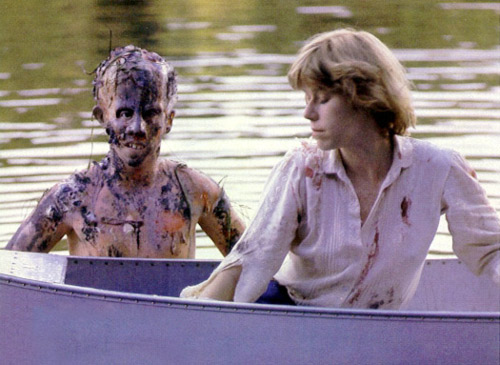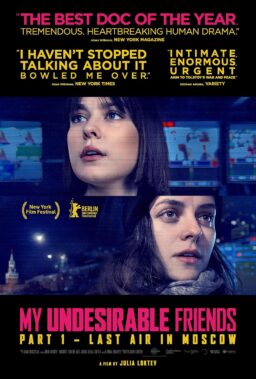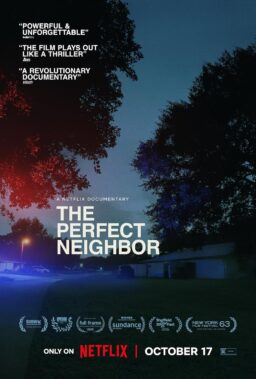The basic movie reference books are filled with definitions of terms like closeup and auteur theory. Nobody needs to know those words. What you need is Ebert’s Glossary of Terms for the Cinema of the 1980s. What follows is an attempt to compile such a list — a practical, everyday guide to enhance your moviegoing pleasure, and help you categorize what you find on the screen.
ACNE: Acronym for Adolescent Character’s Neurotic Envy Syndrome, which usually afflicts shrill teenage blonds in movies about how the good girl wins the hero away from the syndrome sufferer. (See “Secret Admirer”)
Beginning, The: Word used in the titles of sequels to movies in which everyone was killed at the end of the original movie, making an ordinary sequel impossible. Explains to knowledgeable filmgoers that the movie will concern, for example, what happened in the Amityville house before the Lutzes moved in. (See also: “The First Chapter,” “The Early Days,” etc.)
Box Rule: Useful rule-of-thumb about movie advertisements that have a row of little boxes across the bottom, each one showing the face of a different international star and the name of a character (e.g., “Curt Jurgens as the Commandant”). The rule is: Automatically avoid such films. Example: “’The Cassandra Crossing,” “’Force 10 from Navarone,” and most films made from Agatha Christie novels.
Brotman’s Law: “If nothing has happened by the end of the first reel, nothing is going to happen.” (Named for Chicago movie exhibitor Oscar Brotman.)
Crash Scene: Alternative to dialogue; substitute for Burt Reynolds’ continuing growth as an actor.
Chop-Socky Movie: Any film involving a karate fight and including the line: “Ha! Ha! Now you die!”
Dead Teenager Movie: Generic term for any movie primarily concerned with killing teenagers, without regard for logic, plot, performance, humor, etc. Often imitated; never worse than the “Friday the 13th” sequels.
Docu-drama: TV term for extended-length program that stars a disease or social problem, and co-stars performers willing to give interviews on how they experienced personal growth through their dramatic contact with same.
First Law of Funny Names: No names are funny unless used by W.C. Fields or Groucho Marx. Funny names, in general, are a sign of desperation at the screenplay level.
“Food Fight!”: Dialogue that replaced “Westward ho!” as American movies ended the long frontier trek and began to look inward for sources of inspiration.
“Fruit Cart!”: An expletive used by film buffs during any chase scene involving a foreign or ethnic locale, reflecting their certainty that a fruit cart will be overturned during the chase, and an angry peddler will run into the middle of the street to shake his face at the departing Porsche.
Kookalouris: Name for a huge sheet of cardboard or plywood with holes in it, which is moved back and forth in front of light to illuminate a character’s face with moving light patterns. Popular in the 1930s; back in style again with the movies of Steven Spielberg, who uses a kookalouris with under-lighting to show faces that seem to be illuminated by reflections from pots of gold, buckets of diamonds, pools of fire, pirate maps and radioactive kidneys.
Hollywood Car: Looks like a normal automobile, but backfires after being purchased from used car lot by a movie heroine who is starting out again in life and is on her own this time.
Horny Teenager Movie: Any film primarily concerned with teenage sexual hungers, usually male. Replaced, to a degree, by Dead Teenager Movies (q.v.), but always popular with middle-age movie executives, who like to explain to their 17-year-old stars why the logic of the dramatic situation and the teachings of Strasberg and Stanislavsky require them to remove their brassieres.
Idiot Plot: Any plot containing problems that would be solved instantly if all of the characters were not idiots.
Impregnable Fortress Impregnated: Indispensable scene in all James Bond movies and many other action pictures, especially war films. The IPI sequence begins early in the picture, with long shots of a faraway fortress and Wagnerian music on the sound track. Eventually the hero gains entry to the fortress, which is inevitably manned by technological clones in designer uniforms. Sequence ends with destruction of fortress, as clones futilely attempt to save their marvelous machines. (See “The Guns of Navarone,” etc.)
Intelligence: In most movies, “all that separates us from the apes.” In “Sheena, Queen of the Jungle,” what we have in common with them.
Mad Slasher Movies: Movies starring a mad-dog killer who runs amok, slashing all of the other characters. The killer is frequently masked (as in “Halloween” and “Friday the 13th”), not because a serious actor would be ashamed to be seen in the role, but because then no actor at all is required; the only skills necessary are the ability to wear a mask and wield a machete. For additional reading, see Splatter Movies, by John (“mutilation is the message”) McCarty.
Make My Day: The first line of movie dialogue quoted at a presidential press conference since Jimmy Carter said, “I’ll never lie to you.”
Me-Push-Pull-You: Literal translation or the body language in many Hollywood action pictures, in which, as the hero and heroine flee from danger, the man takes the woman’s hand and pulls her along meekly behind him. This convention is so strong that it is seen even in films where it makes no sense, such as “Sheena,” in which a jungle-woman who has ruled the savage beasts since infancy is pulled along by a TV anchorman fresh off the plane.
Seeing-Eye Man: Function performed by most men in Hollywood feature films. Involves a series of shots in which (1) the man sees something, (2) he points it out to the woman, and (3) she then sees it, too, often nodding in agreement, gratitude, amusement or relief.
Semi-Obligatory Lyrical Interlude (Semi-OLI): Scene in which soft focus and slow motion are used while a would-be hit song is performed on the sound track and the lovers run through a pastoral setting: Common from the mid-1960s to the mid-1970s; replaced in 1980s with the Semi-Obligatory Music Video (q.v.).
Semi-Obligatory Music Video: Three-minute sequence within otherwise ordinary narrative structure, in which a song is played at top volume while movie characters experience spasms of hyperkinetic behavior and stick their faces into the camera lens. If a band is seen, the Semi-OMV is inevitably distinguished by the director’s inability to find a fresh cinematic approach to the challenge of filming a slack-jawed drummer.
Sequel: A filmed deal.
Still Out There Somewhere: Obligatory phrase in Dead Teenager and Mad Slasher Movies, where it is triggered by the words: “The body was never found. They say he/she is…”
Tijuana: in modern Horny Teenager Movies, performs the same symbolic function as California did for the Beats and Paris did for the Lost Generation.
Wet: In Hollywood story conferences, suggested alternative to nude, as in: “If she won’t take off her clothes, can we wet her down?” Suggested by Harry Cohn’s remark about swimming star Esther Williams: “Dry, she ain’t much. Wet, she’s a star.”
The We’re Alive! Let’s Kiss! Scene: Inevitable conclusion to any scene in which hero and heroine take cover from gunfire by diving side by side into a ditch, and find themselves in each other’s arms, usually for the first time. (See “High Road to China.”)
Ukulele Picks: What will happen to you if you are a bad movie.












